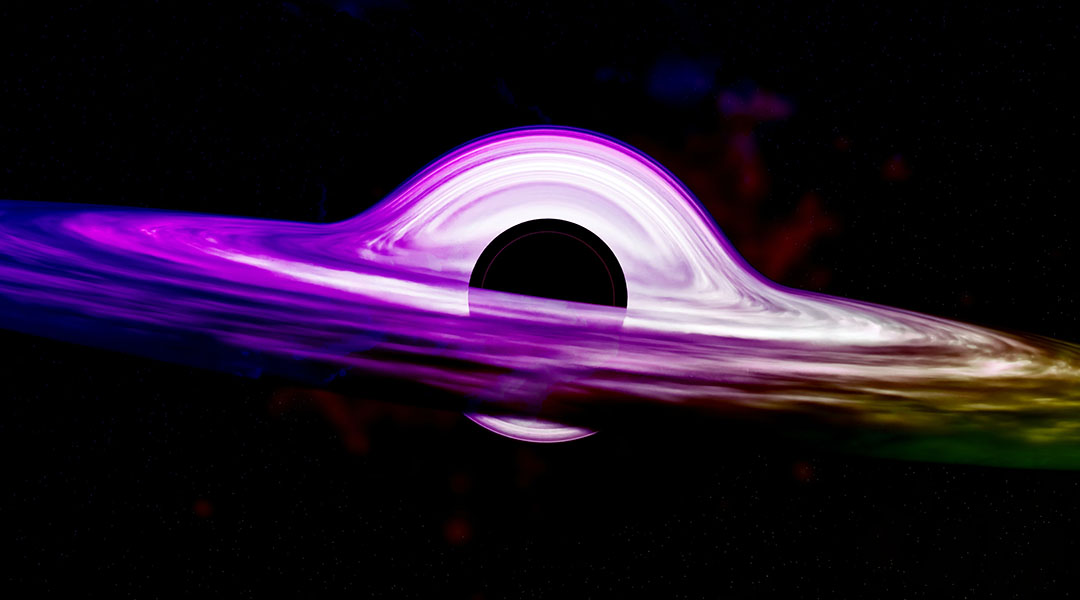Dark matter could be aggregating around black holes, providing a possible means of indirectly measuring its properties.
In addition to ordinary matter, the Universe is filled with a mysterious substance known as dark matter, which does not emit, absorb, or reflect light. This entity was discovered by the Swiss astronomer Fritz Zwicky back in 1933, not through direct observation, but due to the gravitational pull it exerts on celestial bodies — ordinary matter alone would not be enough to keep stars in their orbits around galactic centers or keep galaxies in clusters.
However, despite the fact that dark matter accounts for about 85% of all matter in the Universe, its exact composition remains unknown. Many ideas have been put forward over the past several decades, backed up by theoretical and experimental research, but so far neither ground-based detectors nor space satellites have provided any concrete answers.
These failures have led astrophysicists to look for other ways to study dark matter, with one of the most popular means being through the observations of black holes, whose powerful gravity is expected to attract a large amounts of this substance.
If dark matter really does gather into dense clouds around black holes, this should affect the characteristics of these celestial bodies, making it possible to measure the properties of dark matter particles indirectly.
The best place to look for dark matter?
Nowhere is this more likely than in the merger of two black holes, where the properties of the emitted gravitational waves should be affected by their interaction with the theorized cloud of dark matter. However, these merger events are quite rare, and the insufficient sensitivity of modern gravitational wave detectors does not allow physicists to accurately measure the properties of the resulting gravitational radiation.
To overcome these difficulties, theoretical physicists Man Ho Chan and Chak Man Lee at The Education University of Hong Kong proposed investigating another physical process whose study does not involve the extremely challenging detection of illusory gravitational waves: the motion of a star around a black hole in a binary system.
In a recent paper published in The Astrophysical Journal Letters, the scientists analyzed the dynamics of two such systems known as A0620-00 and XTE J1118+480.
Each of these binary systems, consisting of a black hole with a mass of about six solar masses and a star several times lighter than our Sun, is located only a few thousand light-years from Earth, which makes them quite easy to observe and study.
The stars orbit around the black holes in a matter of hours, and this, according to Einstein’s general theory of relativity, should result in the intense emission of gravitational waves. This radiation carries away the energy of the binary system, which leads to a reduction in the stars’ rotation period.
A discrepency
Calculations made in Einstein’s theory predicted that these periods should decrease by about 10 nanoseconds per year. However, astronomical observations have shown that the real reduction is around two orders of magnitude greater.
The team’s explanation for this contradiction is that the stars are losing their velocity not only due to the emission of gravitational waves, but also as a consequence of gravitational interaction with the clouds of dark matter surrounding the black holes. This hypothetical mechanism is called “dynamical friction”, and resembles the drag force exerted by a body moving in a fluid.
“This is the first-ever study to apply the ‘dynamical friction model’ in an effort to validate and prove the existence of dark matter surrounding black holes,” said Chan, an associate professor in the Department of Science and Environmental Studies, in a press release. “The study provides an important new direction for future dark matter research.”
The scientists compared the observed decrease in the stars’ revolution rate with the theory’s predictions for different models of dark matter and found that the observations fit very well into the predicted range, further validating their interpretation and providing an inkling of proof that dark matter exists in these locations.
While these results are exciting, before we can draw definite conclusions, more research and hard proof are needed. The scientists argue that future observations will make it possible not only to understand which theoretical model of dark matter best fits the experiment, but also to exclude other possible explanations for the abnormally fast change in the revolution period of stars in both binary systems, such as subtle interaction of the stars’ magnetic fields with ordinary matter surrounding the black holes.
Fortunately, it seems that the necessary observations can be made in the near future as many suitable binary systems exist close to Earth that can be observed with optical telescopes as opposed to gravitational wave detectors, which have a rather low accuracy.
“In the Milky Way Galaxy alone, there are at least 18 binary systems akin to our research subject which can provide rich information to help unravel the mystery of dark matter,” concluded Chan.
Reference: Man Ho Chan and Chak Man Lee, Indirect Evidence for Dark Matter Density Spikes around Stellar-mass Black Holes, The Astrophysical Journal Letters (2023). DOI: 10.3847/2041-8213/acaafa.
Feature image credit: BoliviaInteligente on Unsplash












+ There are no comments
Add yours